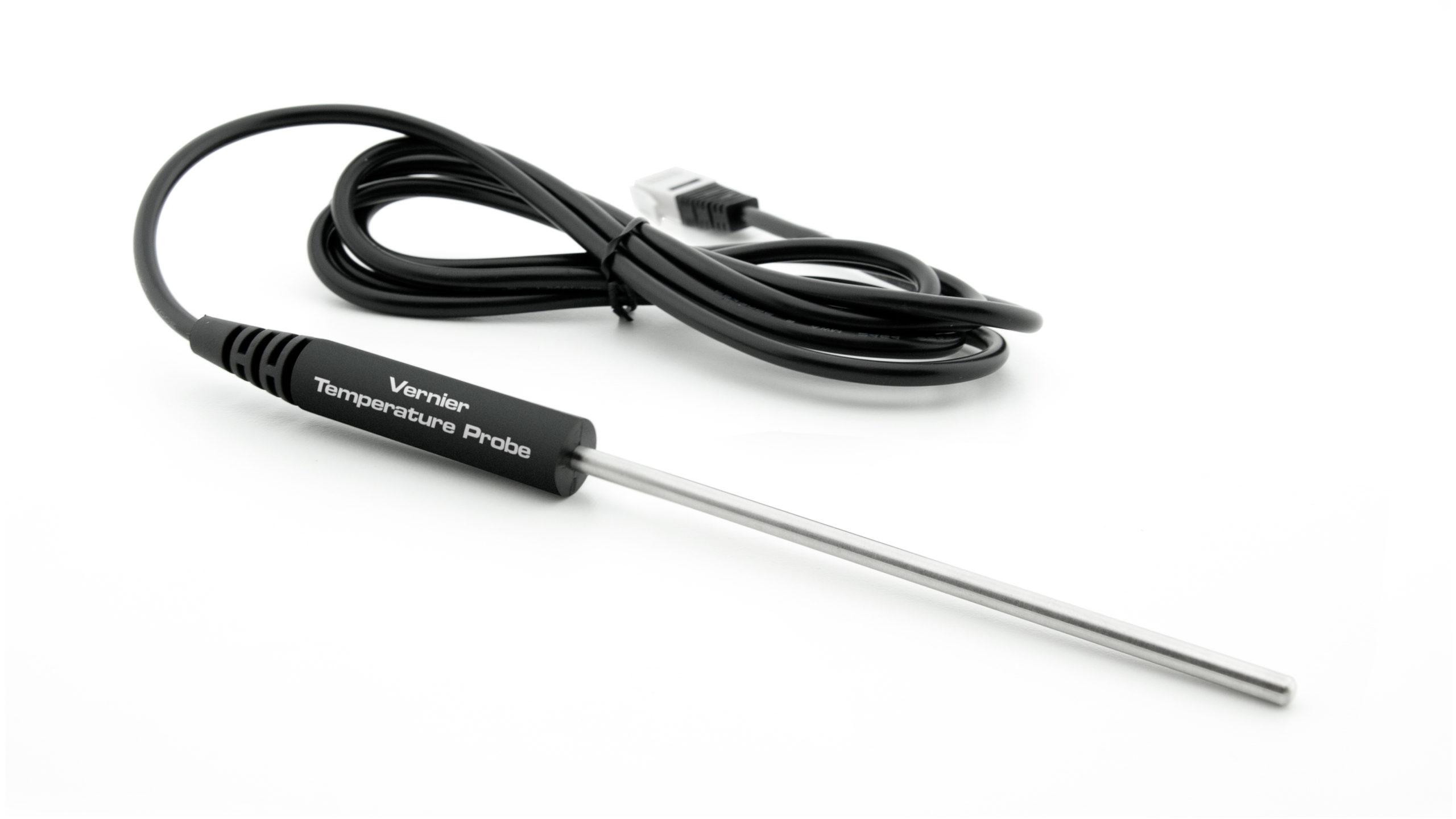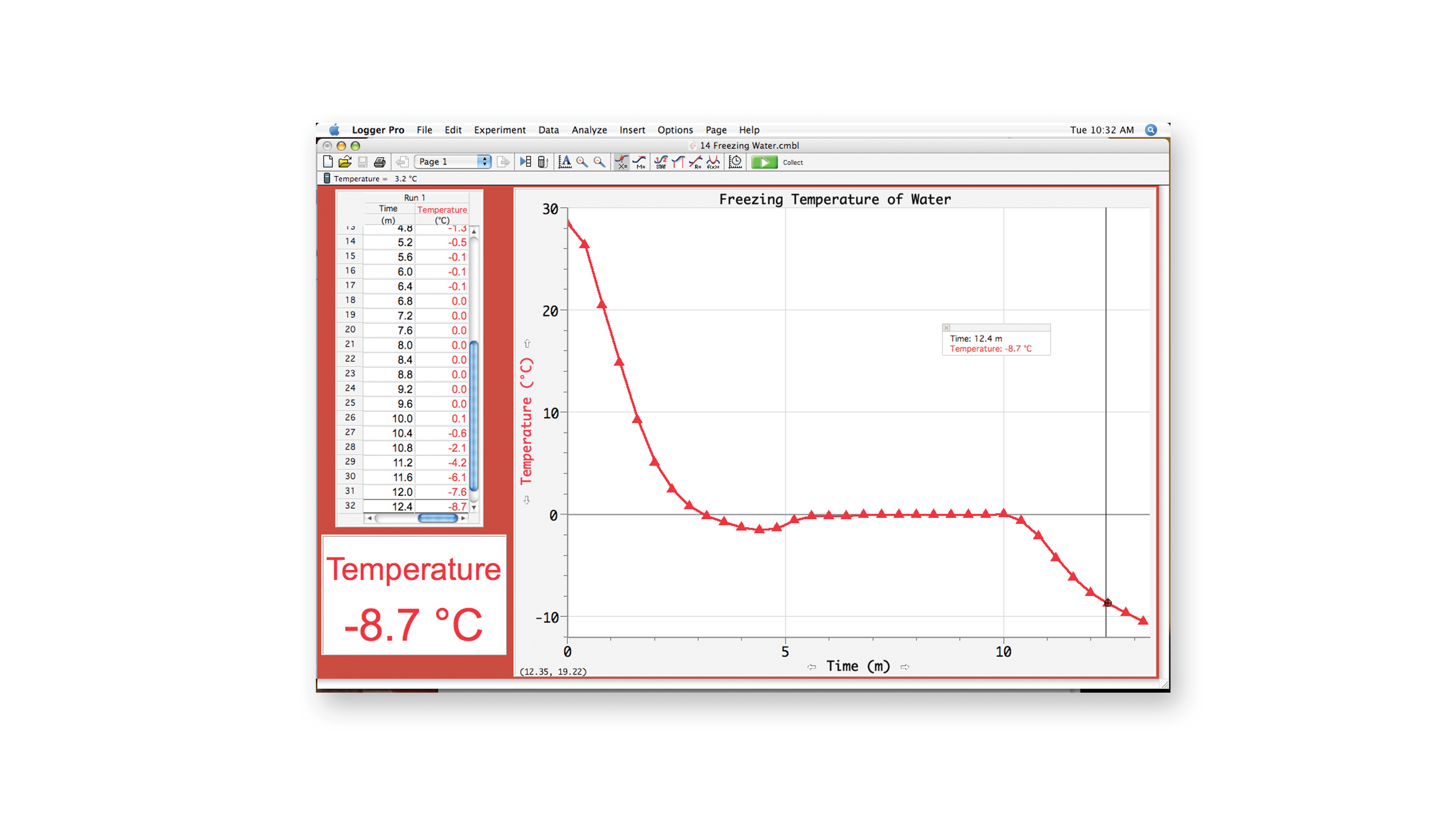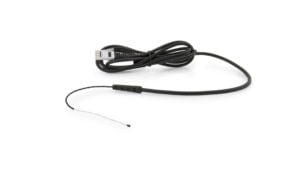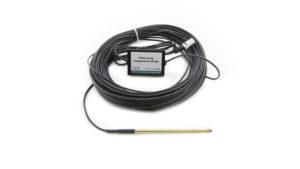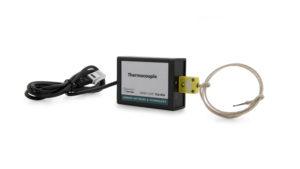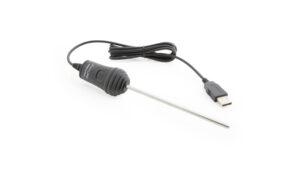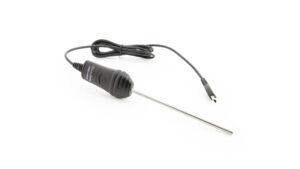The Stainless Steel Temperature Probe is a rugged, general-purpose temperature sensor that can be used in organic liquids, salt solutions, acids, and bases. Use it as you would use a thermometer for experiments in chemistry, physics, biology, Earth science, and environmental science.
Stainless Steel Temperature Probe
- Products
- Browse
- Sensors
- Temperature Sensors
- Stainless Steel Temperature Probe
Stainless Steel Temperature Probe
Stainless Steel Temperature Probe
The Stainless Steel Temperature Probe is a rugged, general-purpose temperature sensor that can be used in organic liquids, salt solutions, acids, and bases. Use it as you would use a thermometer for experiments in chemistry, physics, biology, Earth science, and environmental science.
Due to recent changes in U.S. trade policy, new tariffs are being implemented that impact our products. This means a surcharge of 5% will be applied to orders received starting May 12th, with the exception of software and books. Learn more.
Specifications
- Temperature range: –40 to 135°C (–40 to 275°F)
- Maximum temperature that the sensor can tolerate without damage: 150°C
- Typical Resolution:
- 0.17°C (–40 to 0°C)
- 0.03°C (0 to 40°C)
- 0.1°C (40 to 100°C)
- 0.25°C (100 to 135°C)
- Temperature sensor: 20 kΩ NTC Thermistor
- Accuracy: ±0.2°C at 0°C, ±0.5°C at 100°C
- Response time (time for 90% change in reading):
- 10 seconds (in water, with stirring)
- 400 seconds (in still air)
- 90 seconds (in moving air)
- Probe dimensions:
- Probe length (handle plus body): 15.5 cm
- Stainless steel body: length 10.5 cm, diameter 4.0 mm
- Probe handle: length 5.0 cm, diameter 1.25 cm
Experiments
Elementary School (25 experiments)
Middle School (38 experiments)
High School (109 experiments)
College (71 experiments)
Requirements
Choose a platform below to see its compatibility requirements.
LabQuest
| Interface | LabQuest App |
|---|---|
| LabQuest 3 | Full support |
| LabQuest 2 | Full support |
| LabQuest | Full support |
Computers
| Software | ||||
|---|---|---|---|---|
| Interface | Graphical Analysis | Graphical Analysis (Web App) | Logger Pro (discontinued) | Logger Lite (discontinued) |
| LabQuest Mini | Full support | Full support | Full support | Full support |
| LabQuest 3 | Full support | Full support | Full support | Incompatible |
| LabQuest 2 | Full support | Full support | Full support | Full support |
| LabQuest Stream | Full support 1 | Full support 1 | Partial support 2 | Full support 1 |
| Go!Link | Full support | Full support | Full support | Full support |
| LabQuest | Full support | Full support | Full support | Full support |
| LabPro | Incompatible | Incompatible | Full support | Full support |
Compatibility Notes
- Connect LabQuest Stream via USB. Wireless connection is not supported.
- Bluetooth connection not compatible with macOS 11 and newer.
Chromebook
| Software | |
|---|---|
| Interface | Graphical Analysis (Web App) |
| LabQuest Mini | Full support |
| LabQuest 3 | Full support |
| LabQuest 2 | Full support |
| LabQuest Stream | Full support 1 |
| Go!Link | Full support |
| LabQuest | Full support |
Compatibility Notes
- Connect LabQuest Stream via USB. Wireless connection is not supported.
iOS
| Software | ||
|---|---|---|
| Interface | Graphical Analysis | Graphical Analysis GW |
| LabQuest Stream | Full support | Full support |
| LabQuest 3 | Full support 1 | Full support 1 |
| LabQuest 2 | Full support 1 | Full support 1 |
Compatibility Notes
- iOS and Android™ devices can only connect to LabQuest 2 or LabQuest 3 via Wireless Data Sharing.
Android
| Software | ||
|---|---|---|
| Interface | Graphical Analysis | Graphical Analysis GW |
| LabQuest Stream | Full support | Full support |
| LabQuest 3 | Full support 1 | Full support 1 |
| LabQuest 2 | Full support 1 | Full support 1 |
Compatibility Notes
- iOS and Android™ devices can only connect to LabQuest 2 or LabQuest 3 via Wireless Data Sharing.
Arduino
| Software | |
|---|---|
| Interface | Arduino |
| Vernier Arduino® Interface Shield | Full support |
LabVIEW
| Software | |
|---|---|
| Interface | NI LabVIEW |
| SensorDAQ | Full support |
| Vernier myDAQ Adapter | Full support 1 |
| Go!Link | Full support |
| LabQuest Mini | Full support |
| LabQuest Stream | Full support |
| LabQuest 3 | Full support |
| LabQuest 2 | Full support |
| LabQuest | Full support |
Compatibility Notes
- You can only read the raw count/raw voltage output by this sensor. You must do the programming to convert to proper sensor units.
Texas Instruments
| Software | |||||
|---|---|---|---|---|---|
| Interface | EasyData | DataMate | TI-84 SmartView | DataQuest | TI-Nspire Software |
| EasyLink | Full support 1 | Incompatible | Full support 2 | Full support | Full support 2 |
| CBL 2 | Full support 3 | Full support 3 4 | Incompatible | Incompatible | Incompatible |
| LabPro | Full support 3 | Full support 3 4 | Incompatible | Incompatible | Incompatible |
| TI-Nspire Lab Cradle | Incompatible | Incompatible | Incompatible | Full support | Full support |
Compatibility Notes
- Use with TI-84 Plus calculators only.
- Requires an Easy to Go! adapter
- CBL 2 and LabPro interfaces cannot be used with TI-84 Plus CE calculators.
- DataMate cannot be used with color screen TI-84 Plus calculators; use EasyData with these calculators.
What's Included
Vernier Stainless Steel Temperature Probe
Accessories
Support
Warranty
5-year limited warranty
See our warranty policy
Contact Us
- Recommended: Online Support
- Email: support@vernier.com
- Toll-free: 1-888-837-6437
Related Products
-
Thermocouple
$79.00 -
Go!Temp
Starts at $49.00 -
EasyTemp
$48.00
Educational use only: Vernier products are designed for educational use. They are not appropriate for industrial, medical, or commercial applications.

